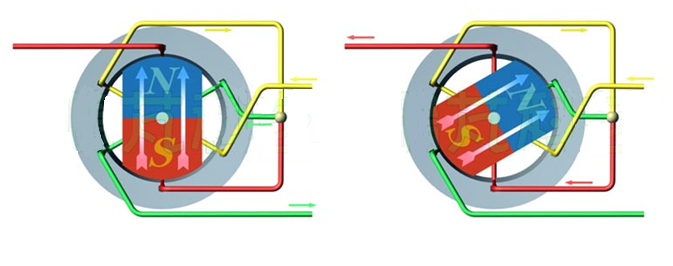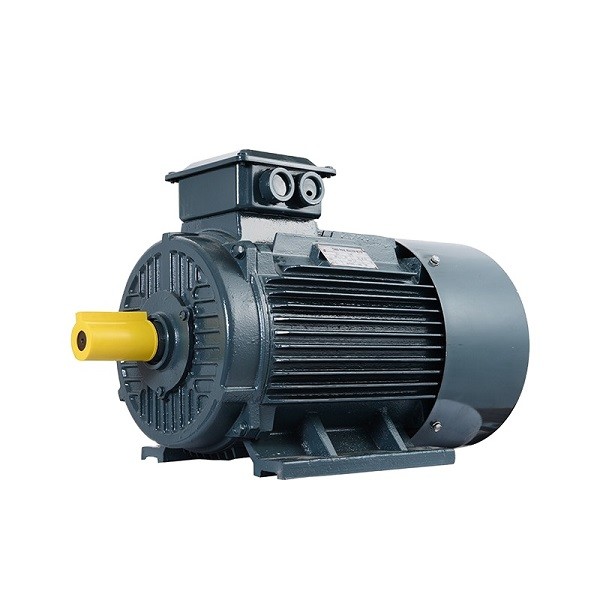QINGDAO ENNENG MOTOR CO.,LTD. |
|
Verified Suppliers
|
Widely Used Industrial 3-Phase AC Permanent Magnet Electric Motor
What Is The Permanent Magnet Synchronous Motor?
The PERMANENT MAGNET SYNCHRONOUS MOTOR is mainly composed of the stator, rotor, chassis, front-rear cover, bearings, etc. The structure of the stator is basically the same as that of ordinary asynchronous motors, and the main difference between the permanent magnet synchronous motor and other kinds of motors is its rotor.
The permanent magnet material with pre-magnetized (magnetic charged) magnetic on the surface or inside the permanent magnet of the motor, provides the necessary air gap magnetic field for the motor. This rotor structure can effectively reduce the motor volume, reduce loss and improve efficiency.
Analysis of the principle of the technical advantages of permanent magnet motor
The principle of a permanent magnet synchronous motor is as follows: In the motor's stator winding into the three-phase current, after the pass-in current, it will form a rotating magnetic field for the motor's stator winding. Because the rotor is installed with the permanent magnet, the permanent magnet's magnetic pole is fixed, according to the principle of magnetic poles of the same phase attracting different repulsion, the rotating magnetic field generated in the stator will drive the rotor to rotate, The rotation speed of the rotor is equal to the speed of the rotating pole produced in the stator.

Due to the use of permanent magnets to provide magnetic fields, the rotor process is mature, reliable, and flexible in size, and the design capacity can be as small as tens of watts, up to megawatts. At the same time, by increasing or decreasing the number of pairs of rotor permanent magnets, it is easier to change the number of poles of the motor, which makes the speed range of permanent magnet synchronous motors wider. With multi-pole permanent magnet rotors, the rated speed can be as low as a single digit, which is difficult to achieve by ordinary asynchronous motors.
Especially in the low-speed high-power application environment, the permanent magnet synchronous motor can be directly driven by a multi-pole design at low speed, compared with an ordinary motor plus reducer, the advantages of a permanent magnet synchronous motor can be highlighted.


Application:

Permanent magnet synchronous motors can be combined with frequency converters to form the best open-loop step-less speed control system, which has been widely used for speed control transmission equipment in petrochemical, chemical fiber, textile, machinery, electronics, glass, rubber, packaging, printing, paper making, printing and dyeing, metallurgy and other industries.
Advantages:
Small And Lightweight
In special electromagnetic and structural design, the volume-to-weight ratio is reduced by 20%, the length of the whole machine is reduced by 10%, and the full rate of stator slots is increased to 90%.
Highly Integrated
The motor and the inverter are highly integrated, avoiding the external circuit connection between the motor and the inverter, and improving the reliability of the system products.
Energy Efficient
High-performance rare-earth permanent magnet material, special stator slot, and rotor structure make this motor efficient up to IE4 standard.
Custom Design
Customized design and manufacture, dedicated to special machines, reduce redundant functions and design margins and minimize costs.
Low Vibration And Noise
The motor is directly driven, the equipment noise and vibration are small, and the impact on the construction work environment is reduced.
Maintenance Free
No high-speed gear parts, no need to change gear lubricant regularly, and truly maintenance-free equipment.
A PM motor can be separated into two main categories: surface permanent magnet motors (SPM) and interior permanent magnet motors (IPM). Neither motor design type contains rotor bars. Both types generate magnetic flux by the permanent magnets affixed to or inside of the rotor.
SPM motors have magnets affixed to the exterior of the rotor surface. Because of this mechanical mounting, their mechanical strength is weaker than that of IPM motors. The weakened mechanical strength limits the motor’s maximum safe mechanical speed. In addition, these motors exhibit very limited magnetic saliency (Ld ≈ Lq). Inductance values measured at the rotor terminals are consistent regardless of the rotor position. Because of the near unity saliency ratio, SPM motor designs rely significantly, if not completely, on the magnetic torque component to produce torque.
IPM motors have a permanent magnet embedded into the rotor itself. Unlike their SPM counterparts, the location of the permanent magnets makes IPM motors very mechanically sound, and suitable for operating at very high speeds. These motors also are defined by their relatively high magnetic saliency ratio (Lq > Ld). Due to their magnetic saliency, an IPM motor has the ability to generate torque by taking advantage of both the magnetic and reluctance torque components of the motor.